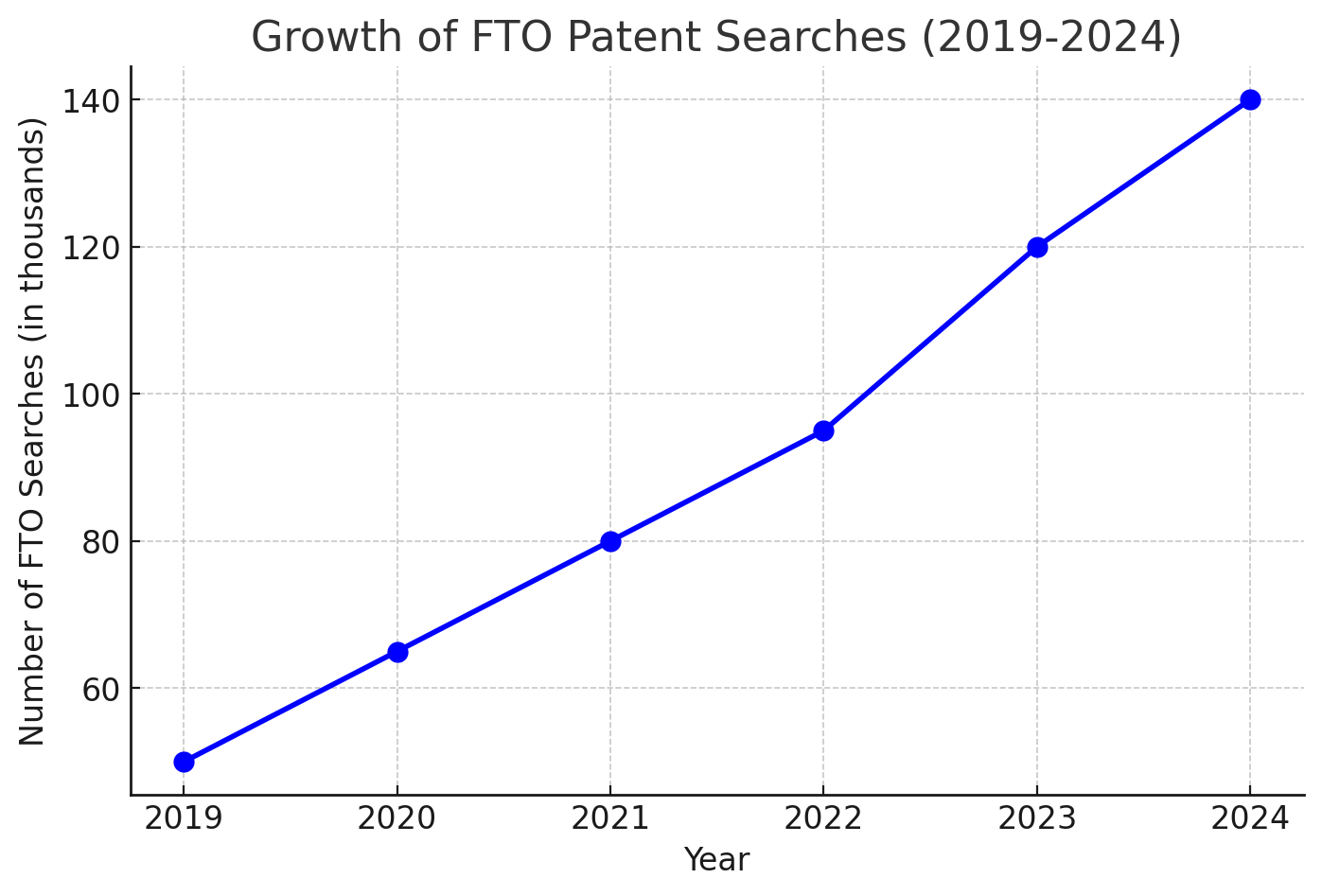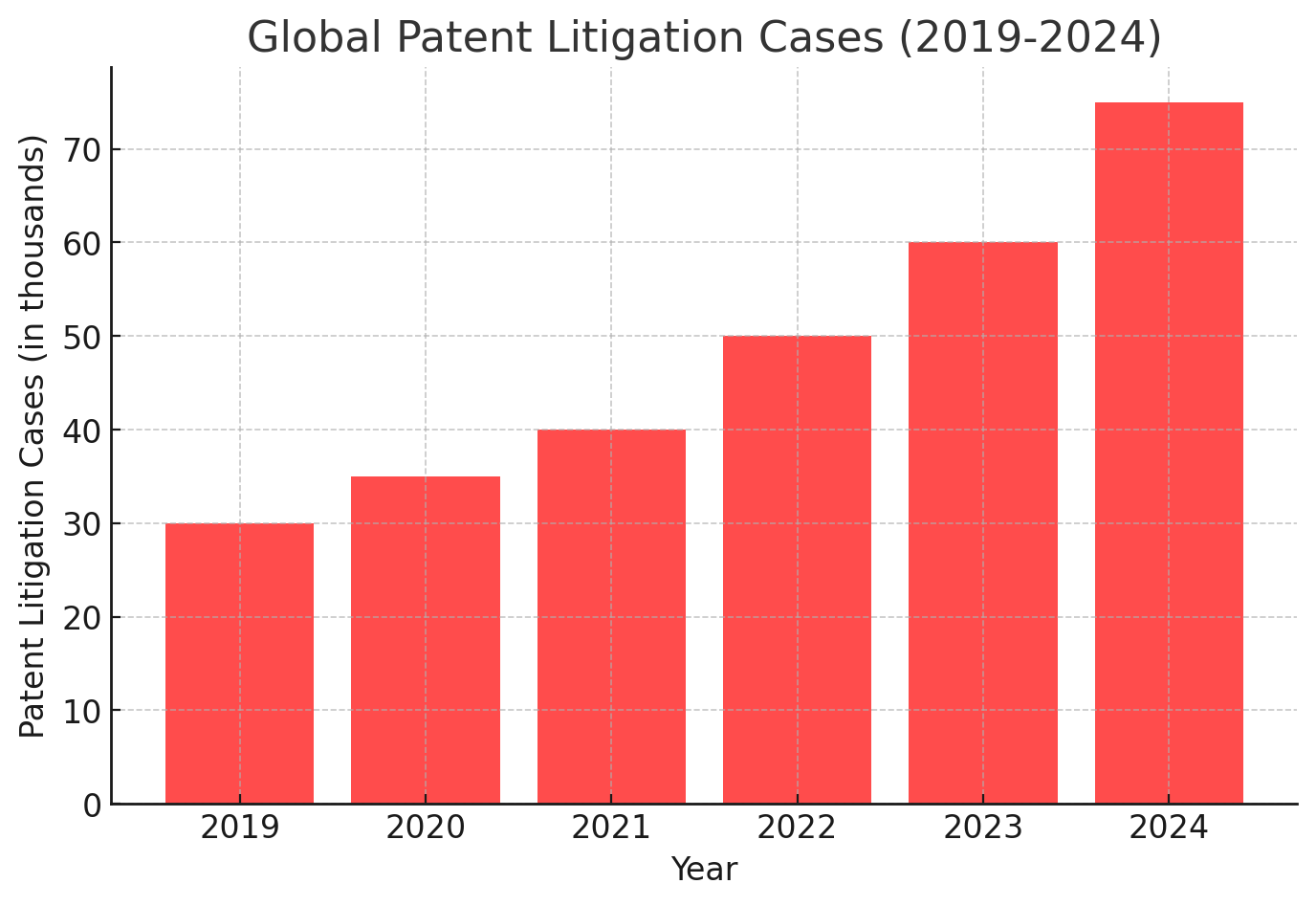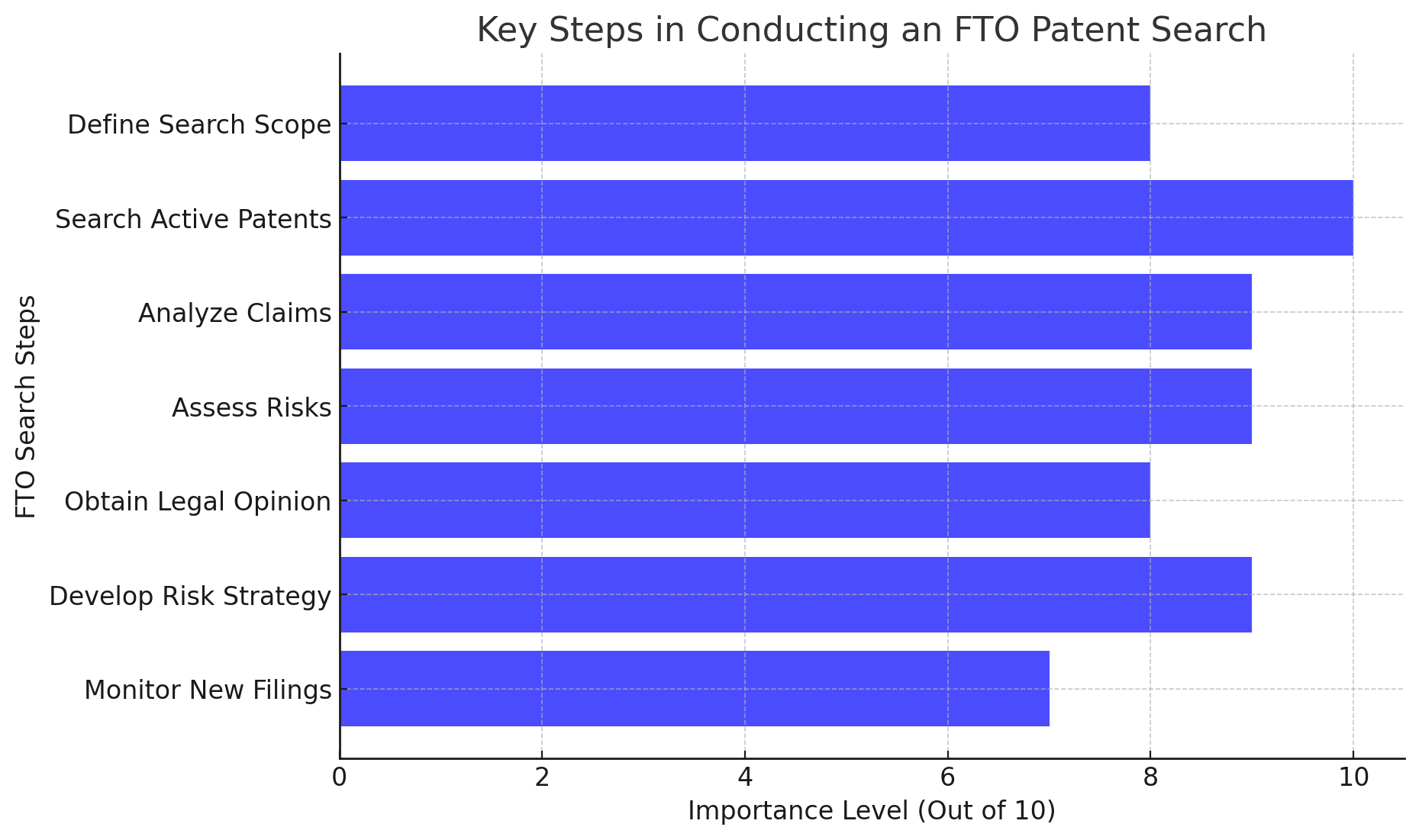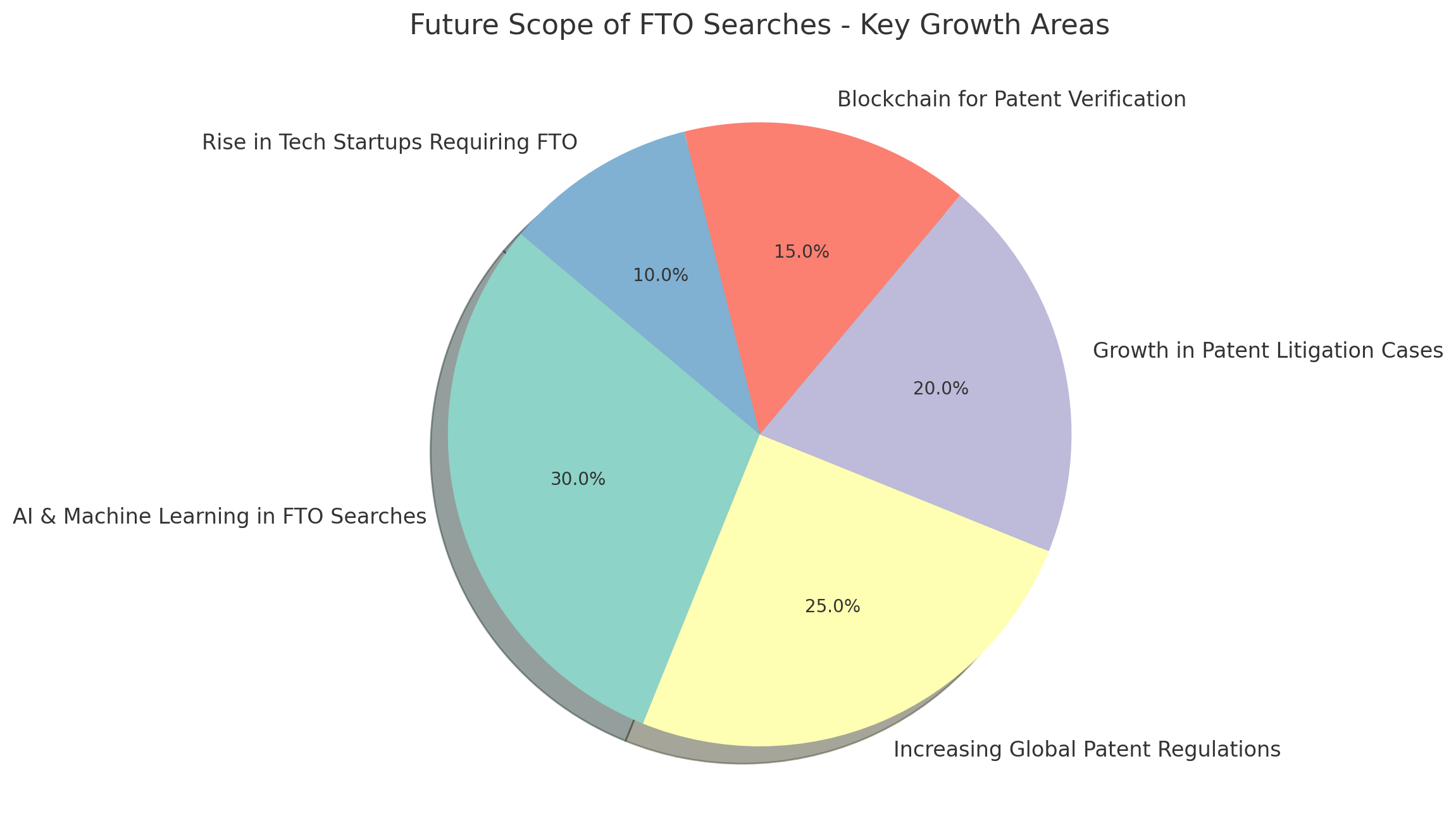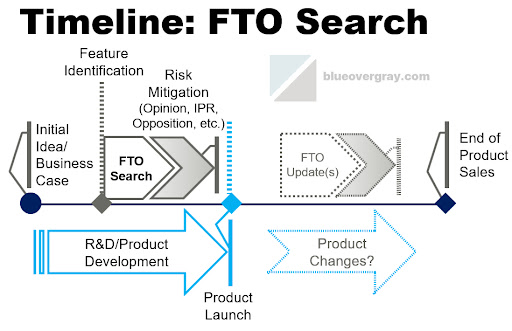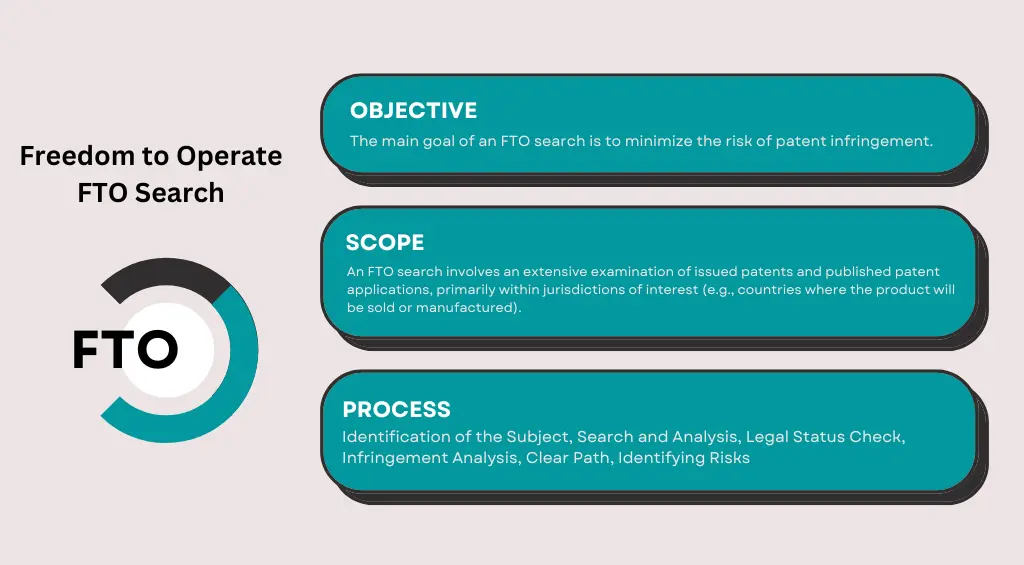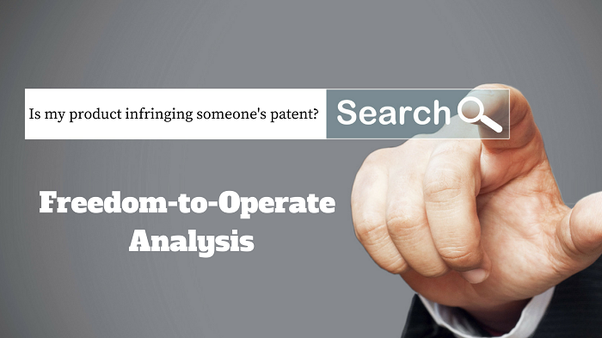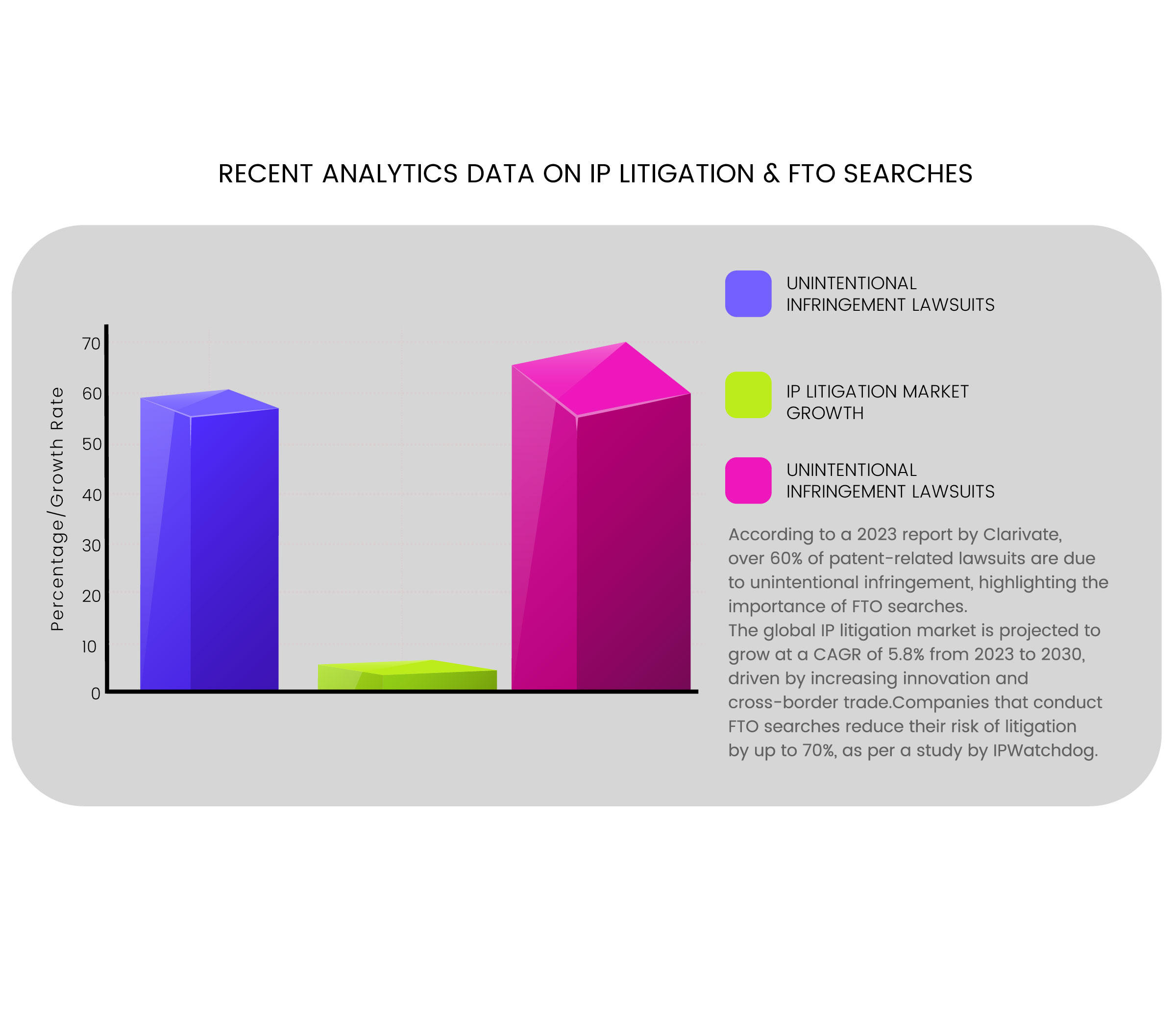Freedom to Operate (FTO) Patent Search
A Freedom to Operate (FTO) search, also known as a clearance search, helps businesses determine whether they can commercialize a product or process without infringing on existing patents.
What is an FTO Patent Search?
An FTO search identifies active patents that may restrict a company from producing, selling, or using an invention in a specific country or jurisdiction. Unlike a patentability search, which focuses on novelty, an FTO search assesses legal risks before launching a product.

